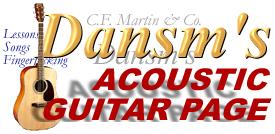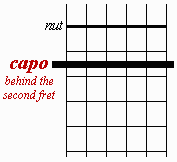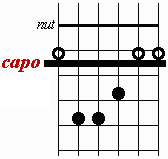
Using a Capo
You may have come across many songs which say "Capo 2nd." What is a capo,
and what does it do to the sound? Well, a capo is basically a bar which
holds down all the strings at one fret. This, in effect, moves the nut
of your guitar up the neck and raises the tuning of your guitar. Your guitar
is tuned in C, but if you use a capo 2nd, it becomes tuned in D. Therefore, if
you play a C chord with capo 2nd, it sounds like a D chord played without a capo.
For more help with this, check out my page on
capo chord equivalents.
The capo I would most recommend is, of course, the most expensive one on the market,
but it is well worth it. The Kyser KG6 spring-loaded capo
is the best capo money can buy.
If you buy a cheaper one today, you will eventually buy the Kyser later. Trust me, I did it.
Here I have a link to a place which sells
capos and strings at a price cheaper than you
will likely find in a local store, so check it out.
How do you use this $15 capo once you get it? Well, here is a diagram showing the fretboard
with a capo 2nd.

Notice that you place the capo between the first and second frets,
not on the second fret. The closer it gets to the second fret, the better,
but do not put it on top of the fret.
This diagram shows a basic E chord with a capo 2nd. Notice that you just play
the regular chords. Technically, you are now playing an F# chord, but it still
looks and feels like an E (it just sounds like an F#).

This should clear up any confusion you guys have regarding the use of capos.
Good luck, and have fun!
Back to Dansm's Acoustic Guitar Basics
You are visitor number
 since 4-14-97
since 4-14-97
© 1998 Daniel E. Smith. Last updated 1-5-98.



